The variety of walls can look a bit overwhelming at first, but really, it’s just the gym giving you more playground options. Each wall has its own personality, challenges, and tricks to learn.
In this post, we’ll break down the most common types of bouldering walls, what makes them fun (and sometimes frustrating), and how you can approach them as a beginner. Think of it as your personal wall “cheat sheet” so you can walk into the gym with confidence and a smile.
Slab Wall
A wall that tilts slightly inward or is vertical. Slabs require balance, footwork, and technique more than brute strength.
Climbing a slab feels like balancing on glass. Holds are often tiny, so it’s all about trust—trusting your feet, your balance, and your patience.
Body focus: Legs and feet do most of the work, with core strength keeping you steady. Great for learning technique over power.

Vertical Wall
Straight-up, 90° vertical. Good for learning basics—foot placement, grip, and body positioning.
This is the “classic” climbing wall—straight up, no tilts. You’ll encounter a mix of balance, technique, and straightforward pulling.
Body focus: Even balance between arms, core, and legs. Builds solid movement fundamentals.
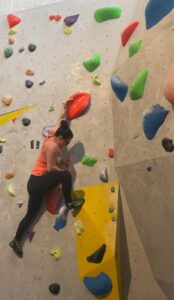
Roof / Cave Wall
Horizontal or near-horizontal walls, like climbing on a ceiling. Demands full body tension and advanced strength.
Feels like climbing upside down (because you basically are). These routes look wild and feel even wilder. Requires strength, creativity, and a good heel hook or two.
Body focus: Core, arms, and grip endurance. You’ll discover muscles you didn’t know you had.
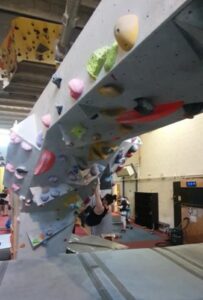
Arete
An outside corner of the wall. Requires squeezing, balance, and using holds on both sides.
An arete is the sharp outer edge of a wall—basically where two wall faces meet. Climbing one feels like hugging the wall while trying to balance on very little. Sometimes you get holds on the edge, sometimes you don’t—it’s all about body positioning.
Body focus: Core for stability, feet for smearing/pressing, and lots of balance. You’ll often find yourself squeezing with legs and arms at the same time, almost like climbing a pillar.

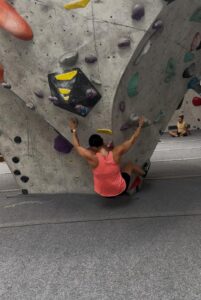
Overhang Wall
A wall that leans outward, forcing you to use more core and arm strength. Overhangs range from slight to very steep.
Here you’re fighting gravity. Holds might be good, but your arms and core burn fast. Overhangs demand efficiency—you’ll quickly learn not to over-grip.
Body focus: Lats, shoulders, and core. Excellent for building endurance and raw pulling power.
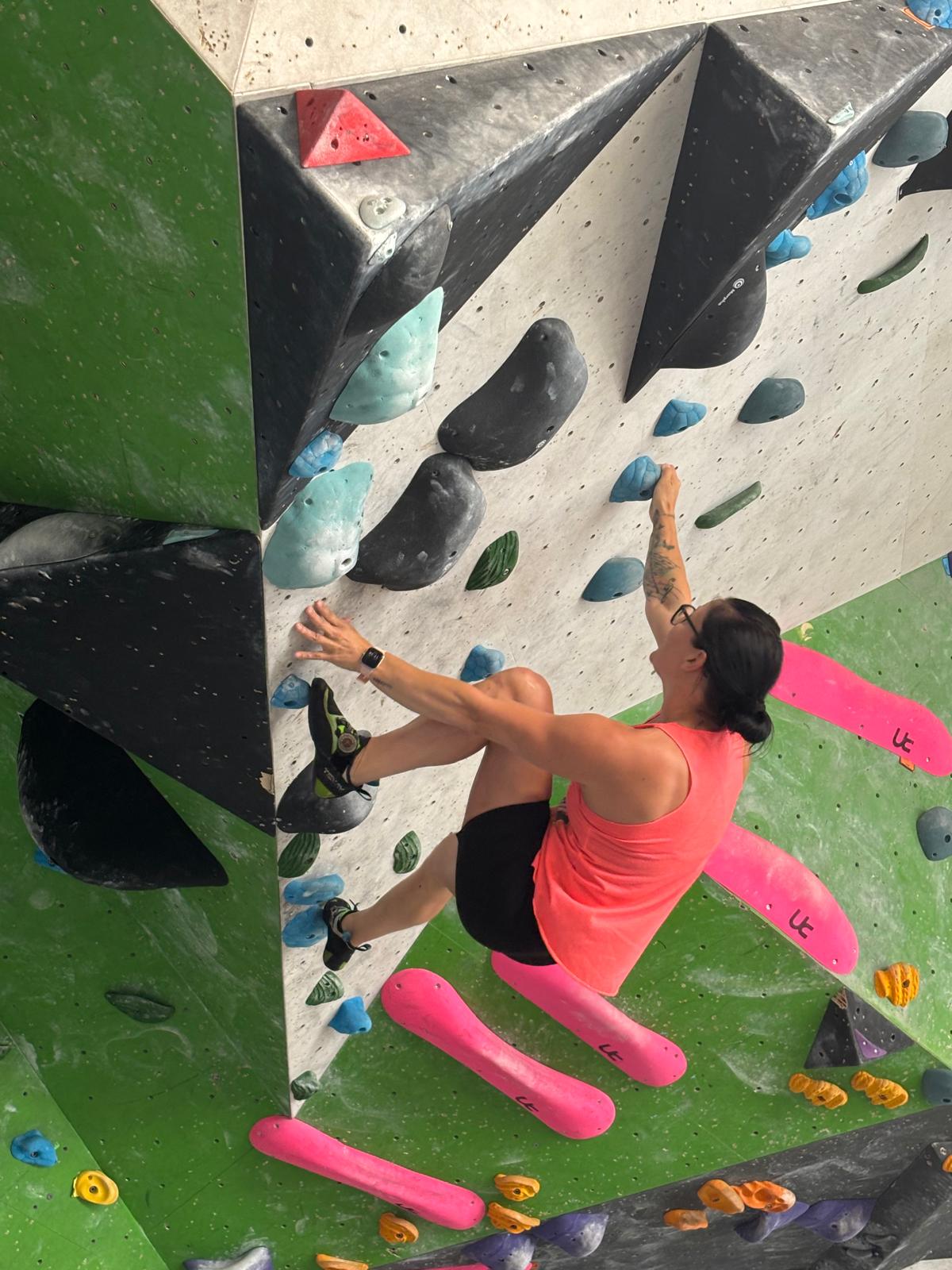
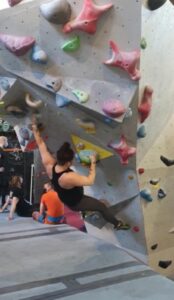
Arête-Combo (Volumes)
Large volumes (big 3D shapes) attached to walls, often combined with slabs or corners. Test balance and creativity.
This is where creativity really kicks in—route setters love combining arêtes and slabs with big volumes (the giant 3D shapes bolted onto walls). It forces you to think outside the box: pressing, palming, mantling, and balancing your way up instead of relying on “classic” pulling.
Body focus: Full-body tension. Core is on fire to keep you from barn-dooring off the arête, legs are constantly pressing and pushing against volumes, and hands do more open-palm slapping than crimping. It’s technical, awkward, and oddly satisfying when you figure it out.

Dihedral (Inside Corner)
An inside corner where you press your body against both walls (“stemming”). Great for practicing technique.
A dihedral is the opposite of an arête—it’s where two walls meet on the inside, forming a corner you can press against. Instead of hanging off the wall, you’re squeezing yourself into it. It can feel a bit awkward at first, but it teaches amazing balance and technique.
Body focus: Lots of stemming with your legs (pressing feet on opposite walls), steady core tension to stay centered, and subtle hand pressure for stability rather than big pulling. It’s a dance between pushing and balancing
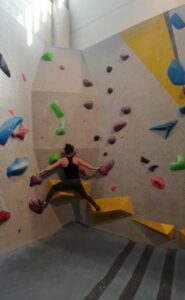
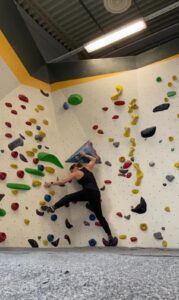
Previous:
- Episode 1: What to Do Before Your First Indoor Climbing Session?
- Episode 2: Gym Etiquette and a Short Beginner’s Jargon Explained
- Episode 3: Warm Up Routines!
- Episode 4: How to Fall Safely and Overcome Fear of Heights
- Episode 5: Beginner Feet and Climbing Techniques!
- Episode 6: The Right Time to Invest in Climbing Gear
Why Climbing for Beginners?
Starting out in climbing can feel overwhelming — new terms, unfamiliar gear, and a wall that looks impossible to scale. Climbing for Beginners exists to make that first step easier. Here, you’ll find simple guides, practical tips, and encouragement from someone who was also learning along the way, and still learning! No jargon, no pressure — just a friendly place to help you start climbing with confidence.
Start Simple
Clear, beginner-friendly advice without the jargon.
Learn Together
Written from the perspective of a fellow climber still enthusiastic of learning.
Climb with Confidence
Practical tips to make your first steps on the wall safer and more fun.
What You Get
Explore the Smart Start series – your quick guide to getting started with confidence. Each episode breaks down the essentials into clear, practical steps, so you can focus less on confusion and more on enjoying the journey.
Clear Guidance:
Breaks down essentials into easy-to-follow steps.
Confidence Boost
Helps you start without feeling overwhelmed.
Support
Encourages questions and provides answers to keep you on track
